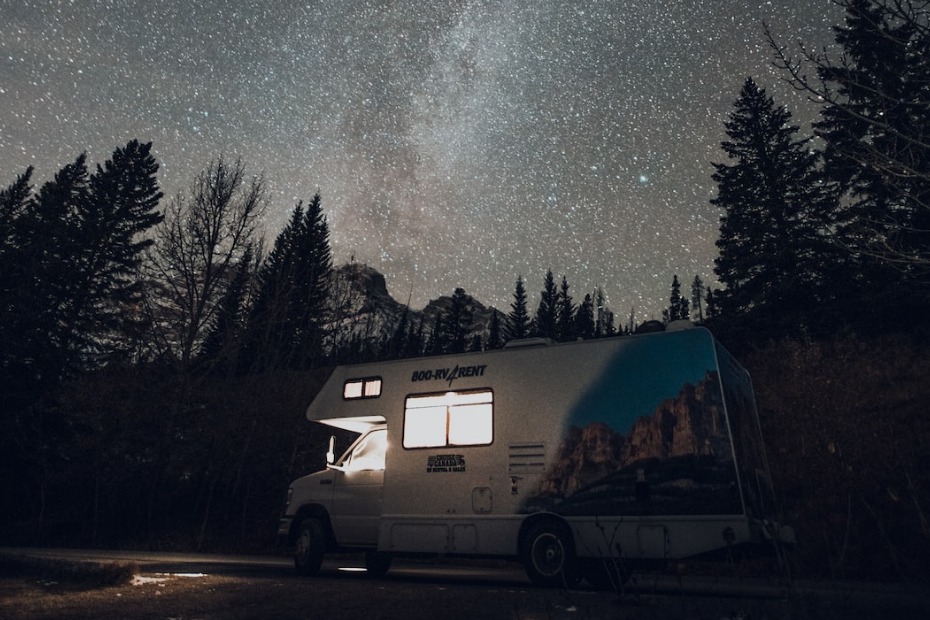Top 10 Best Stargazing Tips for RVers and Campers
Stargazing is a mesmerizing activity that allows RVers and campers to connect with the vastness of the universe and experience the wonders of the night sky. Whether you’re a seasoned astronomer or a beginner, the beauty of the stars can captivate anyone. In this blog post, we’ll explore the top 10 stargazing tips to enhance your experience while RVing or camping. And once you’ve explored these tips, join us over at RVnGO.com and start planning your next RV stargazing trip!
Choose the Right Location
One of the crucial aspects of stargazing is finding a location away from light pollution. Light pollution from cities can hinder your ability to see stars clearly. Look for campgrounds or destinations known for their dark skies, such as national parks or remote areas. Some excellent stargazing destinations include Joshua Tree National Park in California, Cherry Springs State Park in Pennsylvania, and Big Bend National Park in Texas.
Research Moon Phases
Moon phases can significantly impact stargazing visibility. A full moon or a bright moon can wash out the fainter stars and make it difficult to observe celestial objects. Plan your stargazing outings during the new moon or crescent moon phases when the sky is darkest. Keep track of the lunar calendar and schedule your trips accordingly to maximize your stargazing experience.
Be Prepared with Equipment
While stargazing can be enjoyed with the naked eye, having the right equipment can enhance your experience. Consider investing in a telescope if you’re serious about astronomy. For beginners, a Dobsonian telescope is a popular and affordable choice. Advanced astronomers may prefer a computerized telescope for its convenience. If a telescope is not within your budget or you prefer a more portable option, high-quality binoculars can provide stunning views of the night sky. Additionally, bring star charts or download stargazing apps to help you navigate and identify celestial objects.
Dress Appropriately
Nighttime temperatures can drop significantly, even during the warmer months. Dressing in layers is essential to stay comfortable during your stargazing sessions. Start with a base layer that wicks away moisture, add a mid-layer for insulation, and top it off with a waterproof and wind-resistant outer layer. Don’t forget to wear a hat, gloves, and warm socks to keep extremities cozy. Consider bringing a
Learn the Constellations

Familiarizing yourself with the constellations adds depth to your stargazing experience. Begin by learning a few easily identifiable constellations, such as Orion, Ursa Major (the Big Dipper), or Cassiopeia. These prominent constellations can serve as guides to locate other celestial objects. Use resources like books, online tutorials, or smartphone apps to assist in constellation identification. Apps like SkyView, Star Walk, or Stellarium provide real-time information about the night sky, making it easier to spot constellations and other celestial bodies.
Consider Meteor Showers and Celestial Events
Mark your calendar for meteor showers and other celestial events that occur throughout the year. Witnessing a meteor shower, like the Perseids or Geminids, can be a breathtaking experience. Research the best time and location for viewing these events and plan your RVing or camping trips accordingly. Keep in mind that meteor showers often peak during the early morning hours, so set your alarm and be prepared for a magical show.
Minimize Light Interference
To truly immerse yourself in celestial beauty, it’s essential to minimize artificial light interference. Use red LED lights instead of white lights, as they have less impact on night vision. If possible, turn off or dim any unnecessary lights in your RV or campsite. Shield your flashlight with red cellophane or purchase a flashlight with a built-in red filter. By reducing light pollution, you’ll be able to see more stars and other celestial objects.
Be Patient and Allow Your Eyes to Adjust
The human eye takes time to adapt to low-light conditions. When stargazing, give yourself at least 20-30 minutes for your eyes to adjust fully. Avoid looking at bright screens or light sources during this time. Allow your eyes to become accustomed to the darkness, and you’ll be amazed at the increased visibility of stars and subtle details in the night sky.
Capture Memories with Astrophotography
If you’re interested in preserving your stargazing experiences, consider venturing into astrophotography. With advancements in smartphone camera technology, you can capture stunning shots of the night sky using a tripod and long-exposure techniques. For more advanced photographers, DSLR cameras or mirrorless cameras with wide-angle lenses and manual settings provide greater control and quality. Experiment with different exposure times and compositions to capture the beauty of the stars in all their glory.
Embrace the Moment
Lastly, while stargazing is a delightful hobby, remember to take a moment to simply enjoy the vastness of the universe. Lay back, relax, and let the twinkling stars transport you to a place of awe and wonder. Stargazing is not just about learning or capturing images; it’s about connecting with something greater than ourselves and appreciating the magnificence of the cosmos.
Get Out Under the Starts Today!
Stargazing while RVing or camping offers a unique opportunity to escape the hustle and bustle of daily life and immerse yourself in the beauty of the night sky. By following these top 10 stargazing tips, you can enhance your experience and create lasting memories under the stars. So, find the perfect RV rental, pack your RV, choose a dark sky location, and prepare for an unforgettable journey through the cosmos. Happy stargazing!
